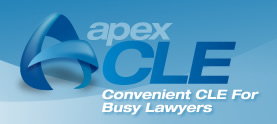No Coverage Outside Policy Period
In State Farm Mutual Automobile Ins. Co. v. Wood, Blake and Peggy Woods and their son, Chase, were involved in an accident when a car driven by Elizabeth Leonardi crossed the center line and struck the Woods’s car head-on. Blake and Peggy Woods and their son were all injured. Leonardi’s car was insured by Met Life and had liability limits of $25,000 per person and $50,000 per occurrence. Virzi’s car was insured by Allstate and had underinsured motorist limits of either $250,000 or $500,000 per person and $500,000 per occurrence. The Woods settled with Met Life and Allstate, receiving a total of $50,000 from Met Life and $450,000 from Allstate. Of those amounts, Blake was allocated $162,500, consisting of $12,500 from Met Life and $150,000 from Allstate.
Woods had insurance policies with State Farm. State Farm issued Woods an automobile insurance policy for a 2001 Dodge Caravan (policy no. 981 8998-B14-13F) and a personal liability umbrella policy (policy no. 13-VB-4928-1). State Farm also issued a policy to a corporation, The Blake Lathom Woods Group, Inc., for a 1999 Saab 9-S (policy no. 779 7541-B21-13Q). In August 2010, Blake asserted underinsured motorist claims under these policies. State Farm filed a complaint for a declaratory judgment. State Farm alleged that the three policies were in effect on “September 2, 2008.” State Farm argued that there was no underinsured motorist coverage.
State Farm alleged that it issued an automobile policy to defendants for the Dodge Caravan “which policy was periodically renewed and which policy was in effect on September 2, 2006.” State Farm notes that the certification for the policy was made by an underwriting team manager of State Farm, Gwen Wood, and that Wood stated that she was the custodian of records pertaining to the issuance of policies for the Fox Division of State Farm. State Farm maintains that these facts show that the attached policy was the certified policy in effect on the loss date of September 2, 2006, with amendatory endorsement 612JJ having been added on February 14, 2006.
State Farm further cites policy provisions. Under the heading, “When Coverage Applies,” the policy states: “The coverages you chose apply to accidents and losses that take place during the policy period. The policy period is shown under “Policy Period” on the declarations page and is for successive periods of six months each for which you pay the renewal premium. Payments must be made on or before the end of the current policy period. The policy period begins and ends at 12:01 A.M. Standard Time at the address shown on the declarations page.” State Farm maintains that the policy, once issued, renewed automatically for the next policy term upon payment of the renewal premium. State Farm further cites a policy provision stating that the policy’s terms may be changed by endorsement.
The court reviewed whether submitting an affidavit is sufficient to establish the effective date of an endorsement. The basic question of what policy is in effect on a given date is generally a factual issue rather than a legal conclusion. Regarding Wood’s competency to make that statement, Rule 191 is satisfied if, looking at the affidavit as a whole, it appears that the affidavit is based on the affiant’s personal knowledge and there is a reasonable inference that the affiant could competently testify to its contents at trial. Defendants correctly point out that the attached declarations page lists various endorsements but not amendatory endorsement 6127JJ. However, this is consistent with the affidavit and declarations page; Wood stated that the endorsement became effective on February 14, 2006, whereas the policy period listed on the declarations page is August 13, 2005, to February 14, 2006. While defendants argue that the relevant declarations page would logically have a policy period of August 13, 2006, to February 14, 2007, there is no evidence that State Farm issued a new declarations page every six months. As State Farm points out, the policy language states that the policy period is shown on the declarations page “and is for successive periods of six months each for which you pay the renewal premium.” The policy also includes language automatically renewing the policy for the next policy period when the renewal premium is paid.
The court held if the Woods wished to counter the statement that the endorsement was in effect with the assertion that it could not have been, as applied to their policy, because they did not receive it, they could have done so through a counter-affidavit. If the party moving for summary judgment supplies facts that, if not contradicted, would warrant judgment in its favor as a matter of law, the opposing party cannot rest on its pleadings to create a genuine issue of material fact.
State Farm Mutual Automobile Ins. Co. v. Woods, 2013 WL 1883532 (Ill.App. 2 Dist.) (Filed under Supreme Court Rule 23 and may not be cited as precedent by any party except in the limited circumstances allowed under Rule 23(e)(1).).
